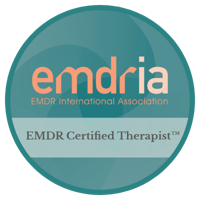Understanding Your Reactions and Finding Clarity with TICES
EMDRMEDICAL TRAUMAADJUSTMENT TO ILLNESSRESILIENCETRAUMAEMOTIONS
2/17/20242 min read


We all go through life doing the best we can to navigate the ups and downs. Along the way, we encounter various situations that require us to adapt and find ways to cope. Sometimes, the strategies that worked for us in the past may not be as effective in the present. It can be confusing to understand what triggers our reactions, when and why they occur, and most importantly, what caused them in the first place. This is where your EMDR Therapist can play a crucial role in helping you find clarity.
Although you may spend more time outside of therapy than in it, there are tools you can use to organize your experiences between sessions and identify key moments for reprocessing. One such tool is the TICES log.
What is the TICES log?
The TICES log is a helpful tool that allows you to track and understand your reactions and experiences outside of therapy. TICES stands for Triggers, Images, Cognitions, Emotions, and Sensations. By logging these elements, you can gain insights into the patterns and triggers that contribute to your difficulties.
How does it work?
Using the TICES log is simple. Whenever you experience a strong emotional reaction or find yourself struggling with a particular situation, take a moment to reflect on the following:
Triggers: What was going on when you noticed a reaction?
Images: Did any images or memories come to mind? If you were to draw me a picture of the event, what would it be? Were they related to past experiences?
Cognitions: What thoughts were running through your mind during the experience? Were they negative or self-critical?
Emotions: What emotions did you feel? Were you angry, sad, anxious, or overwhelmed? Pay special attention to emotions that surprised you or felt like more or less than what would be "the right amount".
Sensation: Did you notice any physical sensations or changes in your body? Pay attention to any tension, pain, or discomfort. Did you experience any physical sensations that are difficult to put into words? These can include things like tightness in the chest or a knot in the stomach.
By jotting down these details in your TICES log, you create a record that can help you identify common themes and triggers over time. This information can then be shared with your EMDR Therapist during your sessions, providing valuable insights into your experiences outside of therapy.
Why is the TICES log important?
The TICES log serves as a bridge between your therapy sessions. It helps you become more aware of the patterns and triggers that contribute to your difficulties, allowing you and your therapist to work together more effectively. By identifying touchstone experiences through your log, you can focus on reprocessing those specific memories or emotions during your EMDR sessions.
Remember, the TICES log is not meant to replace therapy but rather enhance it. It is a tool that empowers you to take an active role in your healing process and provides valuable information to your therapist.
So, the next time you find yourself struggling or experiencing strong emotions, take a moment to reflect and log your TICES. It's a small step that can lead to big breakthroughs in your journey towards healing and understanding.
Sign up for my blog and get posts directly to your inbox:


Licensed in Minnesota
507-944-4164
Located in Rochester, Minnesota
near the Destination Medical Center


